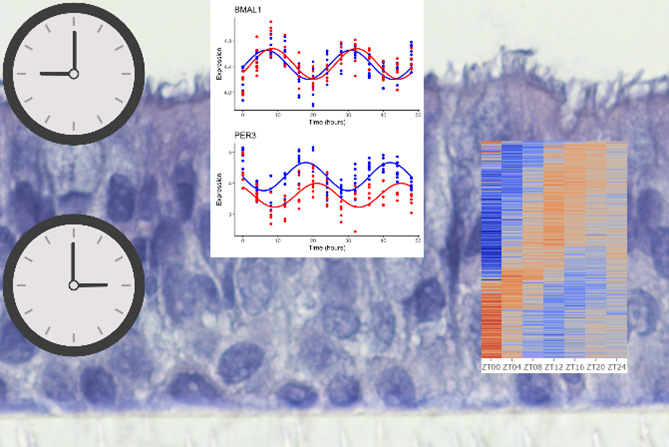Circadian Clock in Human Airway Epithelia
 Many diseases, including asthma, croup, viral infections and allergic rhinitis, demonstrate a diurnal, or time of day, difference in their presentation and severity.
Many diseases, including asthma, croup, viral infections and allergic rhinitis, demonstrate a diurnal, or time of day, difference in their presentation and severity.
Mouse models have identified the molecular circadian machinery as having an integral role in regulating immune and inflammatory responses. However, our understanding of how molecular circadian machinery intersects with human disease presentations remains limited due to the difficulty in obtaining repeated functional and molecular tasks in humans.
We use an ex vivo organotypic model of the human airway epithelium to conduct mechanistic studies of circadian regulation in viral infections and with direct disease relevance. Using temperature-cycled incubators we synchronize endogenous circadian rhythms by mimicking in vivo temperature rhythms to introduce the element of time of day to our experiments. We are characterizing molecular rhythms in patient-derived primary airway epithelial cells in order to link dysregulation of molecular pathways back to clinical characteristics.
This work will help to further understand diseases like asthma, pediatric OSA, allergic diseases and viral infections.